 

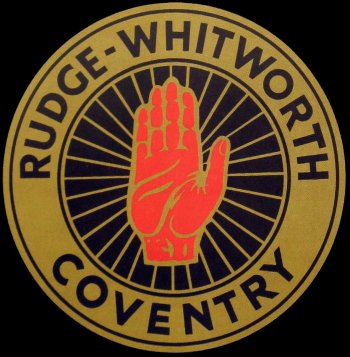

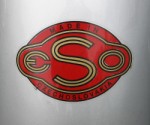


 |
|
|
|
|
|
|
|
Bikes Page 8
|
| |
| |
|
Bikes Page 1
Bikes Page 2 Bikes
Page 3
Bikes Page 4 Bikes
Page 5
Bikes Page 6
Bikes Page 7
|
| |
| |
|
| |
| |
Canterbury
Track Spare |
| |
| Kyokuto |
| |
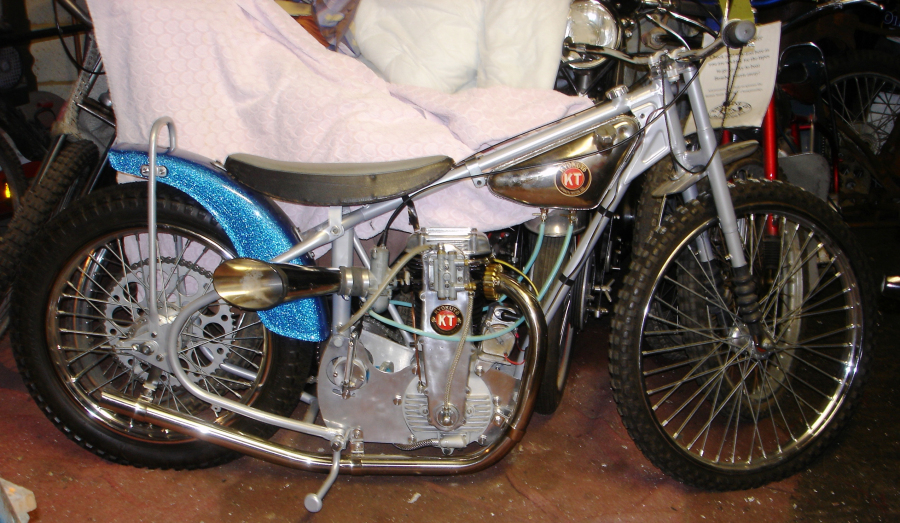 |
|
Courtesy of Stu Towner
|
| |
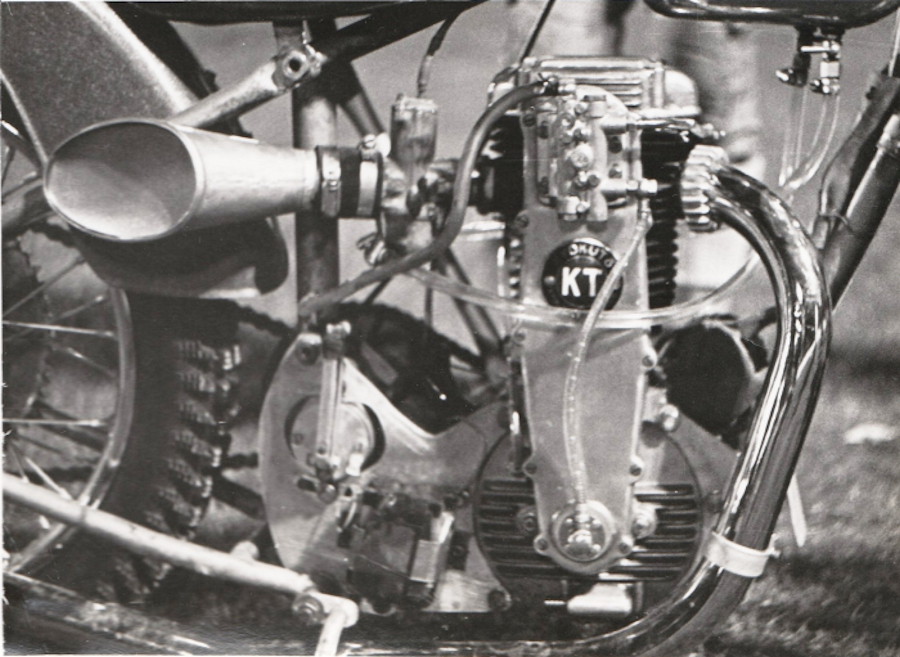 |
|
Courtesy of Stu Towner
|
| |
| |
Stu Towner says: Hi
John. I hope you are keeping well. Prior to Covid hitting the fan
I acquired the engine of the above bike but in the wrong frame.
Russell Osbourn, the
team manager of that time sent me a photo of the engine in the track
spare. It was obviously a Jawa 2 valve frame so I built a replica
of it during lock-down. Best wishes Stu
KYOKUTO
This small Tokyo family concern is one of the
oldest motorcycle engine firms in Japan. The Kyokuto (pronounced Kjokto
and roughly translates as 'rising sun') was first developed prior to
WWII. This was possibly inspired by the Martin/JAP machines used by Putt
Mossman and his touring team. Ironically, the family name behind the
Kyokuto Motor Industry Co. Ltd., was Honda. No relation to the other Mr.
Honda who went to greater success with his motorcycle engines.
By the early 1960s the company
was turning out about 25 - 30 of the 350cc and 500cc single cylinder
engines per month and proved to be very successful on the big Japanese
dirt tracks. Possibly the first Kyokuto engine to be seen in Europe was
not in a speedway machine but in a sidecar moto-cross outfit. Dutch
campaigner, Ben van der Goorbergh bought one and fitted it into his 1966
outfit. It resembled something from the 1930s rather than a state of the
art Japanese engine. The 500cc KT-1 surprised many and proved more than
a match for some of the better machines. By anyone's standards the
engine was more like a museum piece featuring a cast iron cylinder and
head, total loss oiling and a huge external cam drive.
The engine never made the grade
in the speedway world and a modified KT-2 engine was launched during the
early 70s, at least one engine made its way to Australia and was put
through its paces by former Canterbury rider, Jim Crowhurst during the
1971 - 2 season. The bike was shown to his
former Canterbury boss, Russ Osborne who purchased an engine towards the
end of the 1972 season as a track spare at the Kent track. A few
modifications were made to make it eligible for use in the British
league, the most important being a conversion to run on Methanol rather
than petrol which was used in Japan. It was also fitted with a simple
form of electronic ignition. Ross Gilbertson used the machine in
Canterbury's last match of the season and was leading one race before
crashing. He described the power as fantastic but it vibrated so much
that the carburettor came adrift and his helmet shook loose, hence the
crash!
By 1974 a modified KT-2 was
being campaigned in Australian short-track racing by Lindsay McBride.
The engine had been prepared at the factory to run on Methanol and
featured reworked porting and combustion chamber. It also had a squarer
bore and stroke for higher revs. The compression ratio was changed from
8:1 to 14:1 which was better suited for oval track racing. The
experiment never paid off though as the Kyokuto disappeared from the
Australian and British tracks into obscurity. At least two Kyokuto KT-2
engines remain in this country though, one complete in a period Jawa
rolling chassis (this one) as a replica of the Canterbury Track Spare
with the original engine. The other in a speedway collection in
Scotland.
Success did continue on the
Asphalt circuits of Japan, as did production and development. It is
believed that a 500cc, single cylinder four-valve DOHC Kyokuto engine
dating from around 1987, which is too believed, is still in production
today, over 60 years on from the first engines.
|
| |
|
| |
|
Bonhams Auction |
|
2022 |
|
|
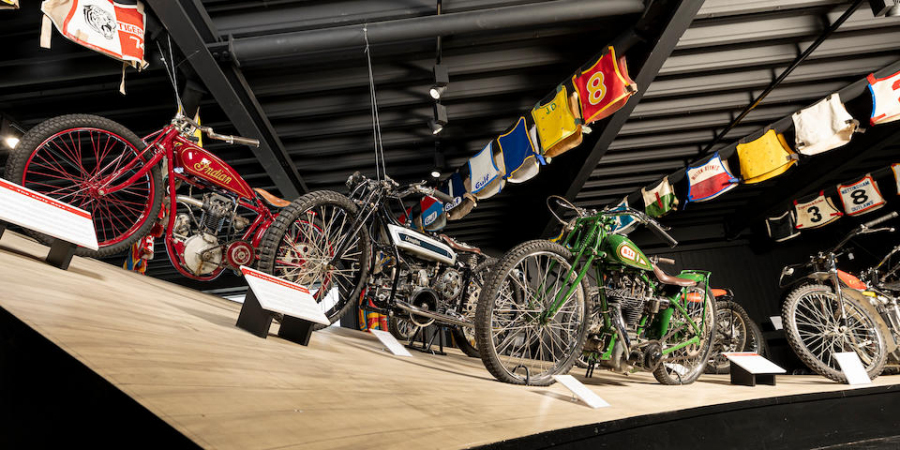 |
|
Bonhams Auctions |
|
|
|
|
|
|
|
|
|
|
350cc Indian |
|
|
 |
|
Bonhams Auction |
|
|
|
ex-Art Pechar, c.1927 Indian 350cc Dirt Track Racing Motorcycle £90,000
- £130,000 |
|
|
|
|
|
c.1956 FIS |
|
|
 |
|
Bonhams Auction |
|
|
|
c.1956 F.I.S. Speedway Racing Motorcycle £3000 - £5000 |
|
|
|
The only speedway machine produced in Poland. The engine directly
plagiarised from the JAP engine |
|
|
|
|
|
4 Valve Rotrax JAP |
|
|
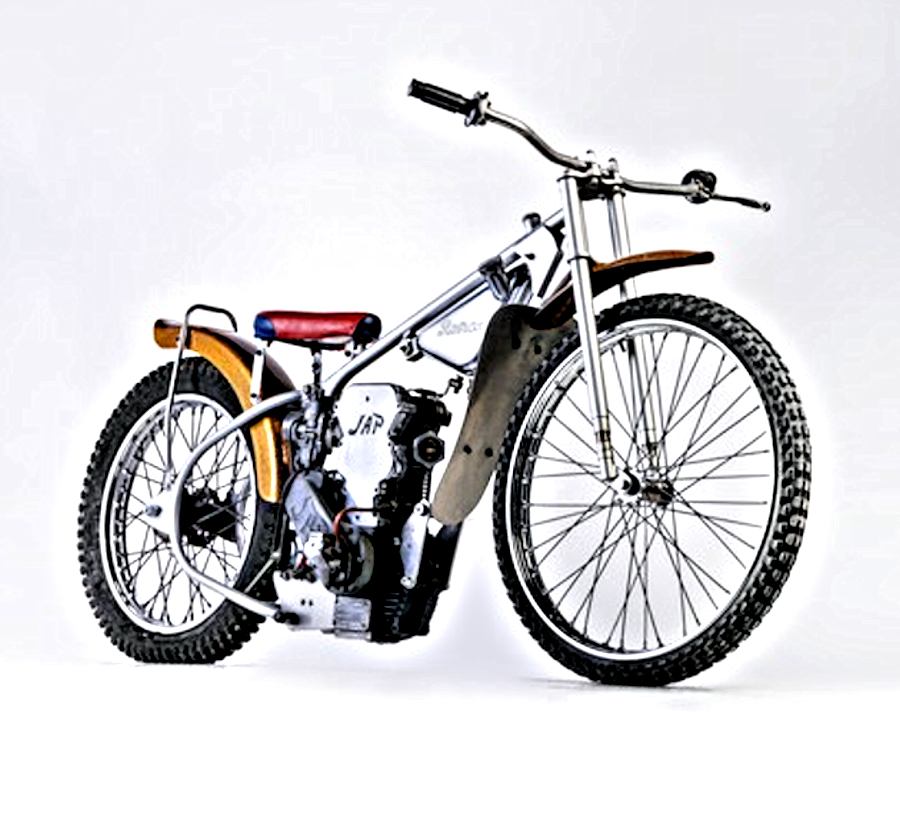 |
|
Bonhams Auction |
|
|
|
c.1979 Rotrax-JAP 4 Valve Speedway Racing Motorcycle Engine no. 4V
78602
|
|
|
An extremely rare example of the final evolution of one of the greatest
engines in the history of speedway
The Tottenham factory of J.A.
Prestwich have been known as manufacturers of a multitude of engines
including the ubiquitous JAP speedway in 1931. Realising that speedway
was a highly specialised sport Prestwich gave the sales concession of
the engine to Victor Martin and Company Ltd in 1932. Victor Martin
produced complete machines based on both Rudge (Lot 498) and Wallis (Lot
503) designs throughout the 1930s. After the war Victor Martin working
with Clem Mitchell from Edinburgh developed a frame to meet the new post
war demands. The Martin Mitchell lightweight frame was associated with
Jack Young's back to back World Final titles in 1951-2. By this time
other manufacturers were moving in - Mike Erskine with the Staride and
Rotrax (Lot 520). In 1951 Alec Jackson bought the manufacturing rights
to the JAP speedway engine as well as the concession to market Rotrax. |
|
|
|
|
|
Weslake |
|
|
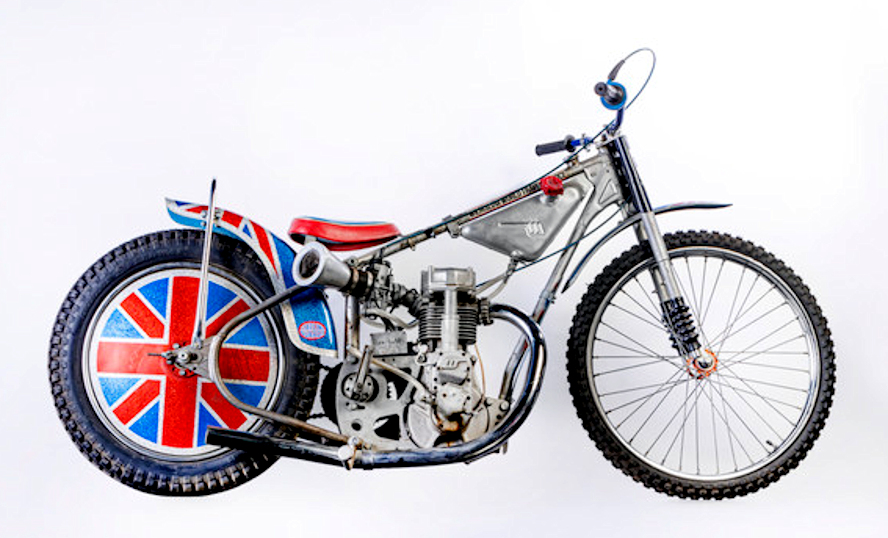 |
|
Bonhams Auction |
|
|
|
Ex-Peter Collins , 1977 Weslake Speedway Racing Motorcycle |
|
|
|
|
|
Douglas |
|
|
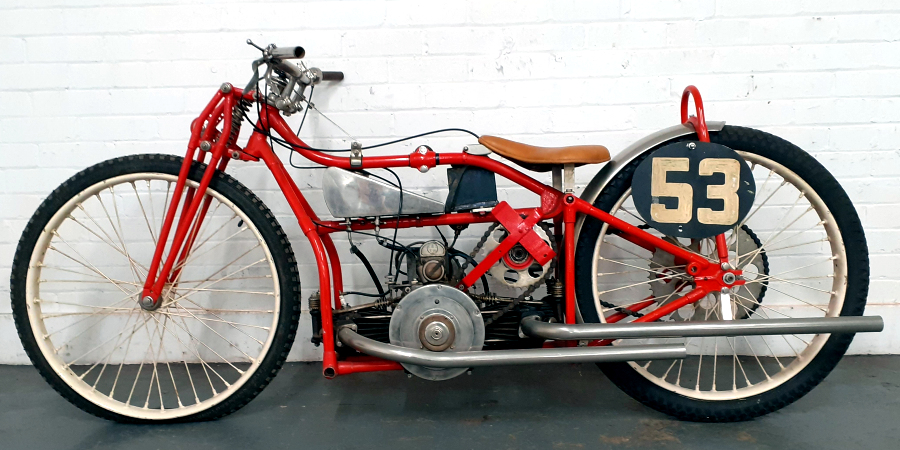 |
|
Bonhams Auction |
|
|
|
1928 Douglas 498cc DT5 Speedway Racing Motorcycle |
|
|
Bristol-based Douglas Foundry commenced motorcycle production in
1907 with a machine powered by a horizontally-opposed twin.
Fore-and-aft installation made for a slim machine with a low
centre of gravity, and the design's virtues were soon
demonstrated in competition. When speedway, or dirt track,
racing arrived in Britain in 1928 the new sport quickly caught
the public's imagination. Before long almost all major UK
manufacturers listed a dirt-track model, Douglas being the first
to establish dominance. The company's inline twins had benefited
from much development on the Australian long tracks, but as
shorter tracks became the norm in the UK, the DT5's otherwise
excellent handling could no longer compensate for the handicap
of a longish wheelbase, and rival single-cylinder models began
to assert themselves.
|
|
|
|
|
|
Hagon Cole |
|
|
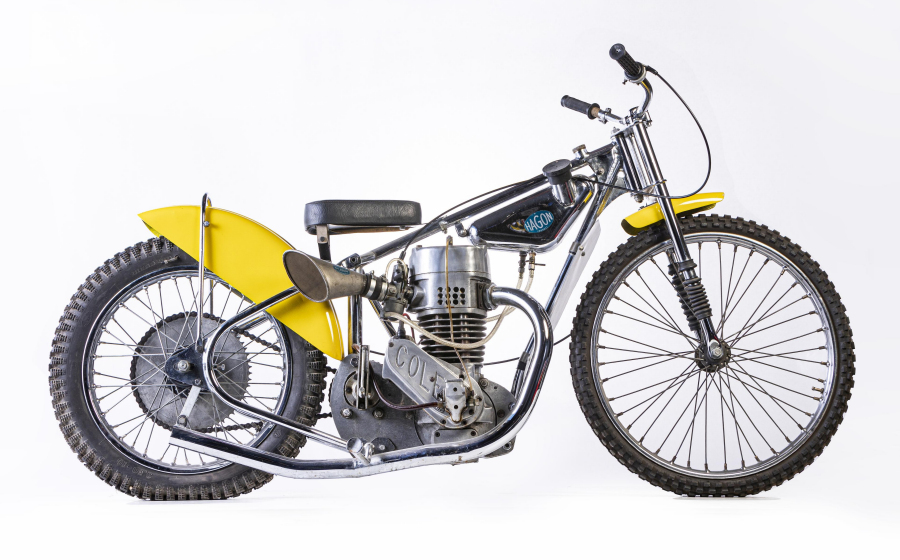 |
|
Bonhams Auction |
|
|
|
c.1970 Hagon-Cole Speedway Racing Motorcycle |
|
|
|
Very rare Cole engined speedway machine.Fine example of the marque |
|
|
|
|
|
|
|
| Bonham's regular speedway machine auctions are
amongst the best places to start your speedway machines collection. |
|
|
|
|
|
|
|
Street 4 Valve
Conversion |
|
|
Joe Owen v
Barry Briggs |
| |
 |
| |
|
Joe v Barry was a Match Race on 5th July 1976 before the meeting with
Peterborough. |
| John says: Alan's photo shows both riders were
using machines with the large cover and 3 bosses. I sent an email
half the way around the world to my mate Dave Gifford in New Zealand
asking him about this modification. Giffy responded with the
following: - |
|
|
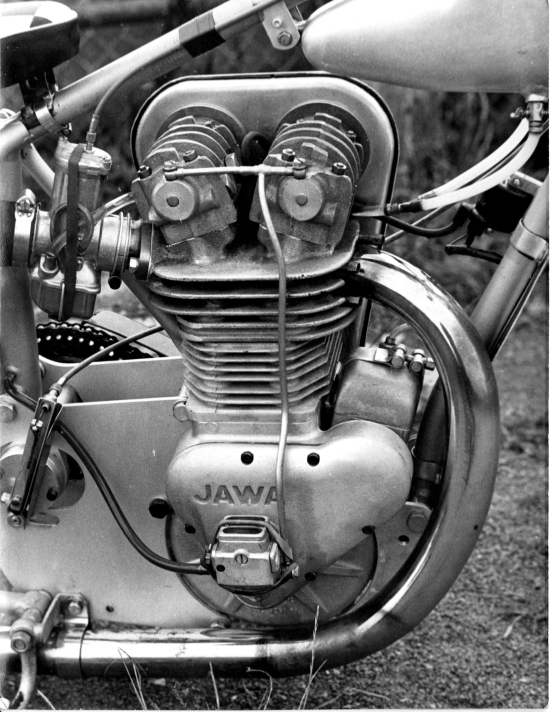
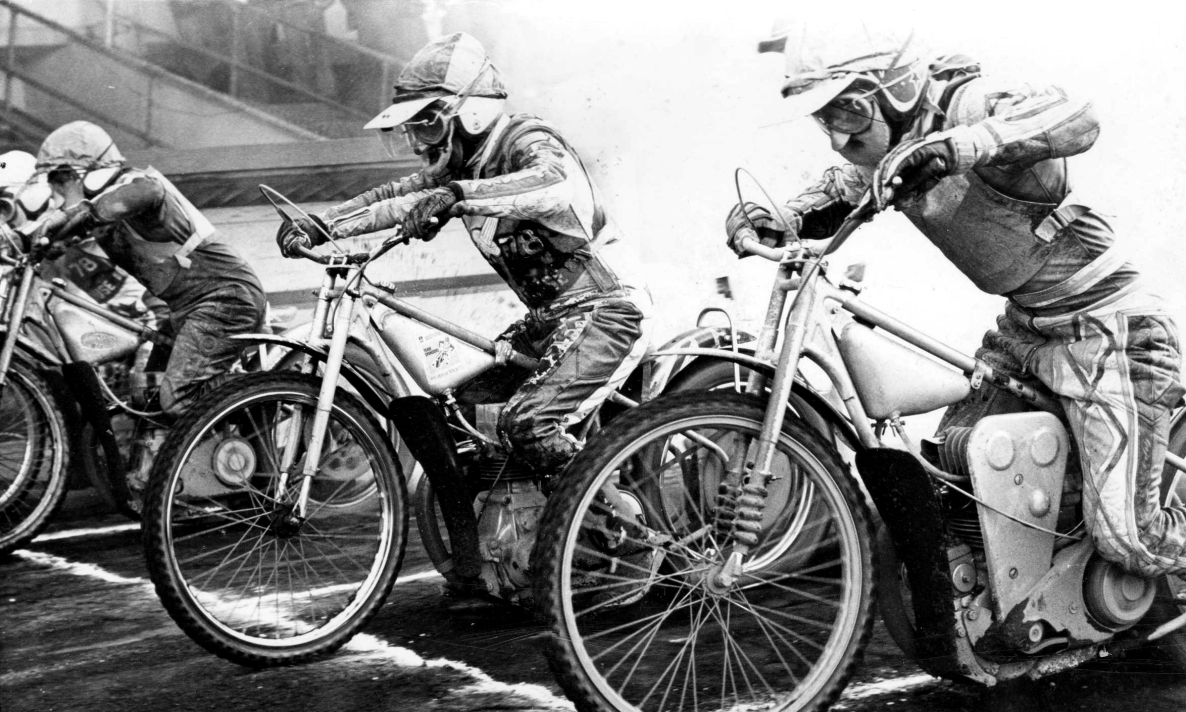 |
| Dave Gifford's pics of his Street Conversion |
| |
| |
Hi giffy mate: I hope you are well and
haven't contracted covid. Newcastle came v close to closing down a
few weeks ago but the promoter Rob Grant junior had second thoughts
and has committed himself to Brough having speedway for at least
2022, god knows after that. You will know his dad Rob Grant senior
from your Berwick days, no doubt! I am writing to ask you about
bikes in the 1970s. Have a look at Briggo's bike in the attached
photo. I am a bit puzzled by the large grey plastic thing with the 3
bosses on it. I assume it was to protect the engine from a nuclear
attack! but i could be wrong.
I have always had an interest in the machines and I cannot believe
the shields were in wide use coz I don't remember them at all. So
what were they used for and why the 3 bosses?
|
| |
Giffy says: Hi John, how nice to hear
from you and to know that you are well. Things are not too bad here
but I fear we all have a long way to go before we return to some
sort of normality.
Now to the picture you sent of young Joe and the other bloke.
The motor in question is a double overhead cam Mk 1 4 Valve
Street. Developed by Neil Street and Ivan Tighe in Australia
around 1975. The design was the only true overhead cam where
the cam opens the valve directly unlike the Jawa and GM which
use rockers in between the cam and valve. The plastic thing with
the bosses you mentioned is actually aluminium and covers the
cam chain which is driven by a sprocket behind the primary chain
sprocket . The two top bosses are where the two cam sprockets
are located and the lower one is where the adjustable idler is.
The British made conversions made by Neil Street used chain
covers of beaten aluminium sheet while the ones made in Aussie
by Ivan Tighe were castings. Hope this all makes sense old
friend, I have att a couple of pics (see above), of a Street
motor I used at Berwick. Hope things get sorted at Brough. All
the very best John and stay safe, regards, giffy
|
| |
| |
Joe Owen Putting his Street Conversion Through
a
High Speed Test |
| |
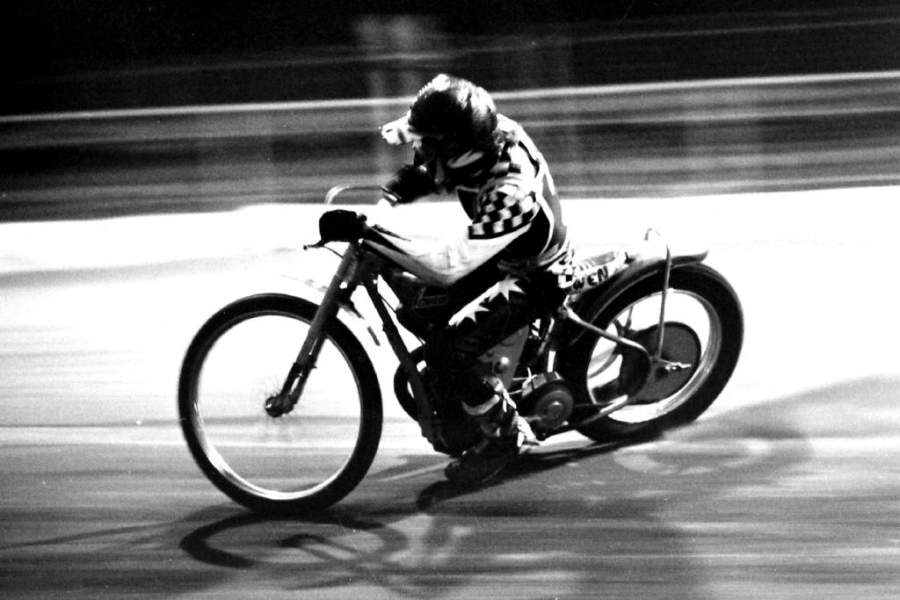 |
| Courtesy of Alan Johnston |
|
|
|
|
|
Briggo 4 Valve Conversion |
|
|
|
4 time world champion Barry Briggs put his
famous "Briggo" name to another 4 valve conversion kit. if you
have any pictures of the Briggo bikes please email me
John |
|
|
|
Hi John I have a new 4 valve conversion kit for
a 890 Jawa complete with modified cams. I am overseas at the moment and
I think it says Briggo on the rocker cover (Barry Briggs) I assume. I am
not a speedway person but I have few speedway engines including what I
think is a MK 1 Maley Could you let me know how successful the Briggo 4V
kit was and how many were made. Thanks Tommy.
|
|
|
|
|
|
|
|
| Tony Webb Australia |
|
|
| Tony and I exchange emails from time to time.
He and I share a passion for the machinery used on speedway tracks
around the world over the years. I have added this page to show
some of the machines he has unearthed, thank you Tony |
|
|
|
|
| Osbourne Engineering Company
(OEC) |
| |
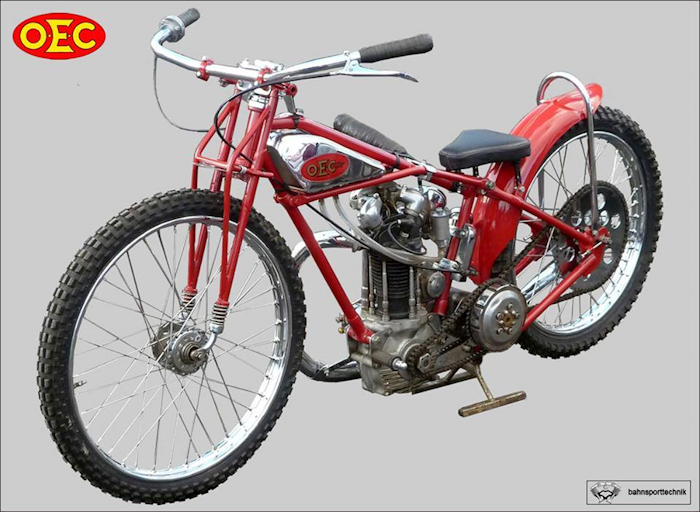 |
| Courtesy of Tony Webb |
| |
|
I believe OEC was an English engineer/bike maker. I understand OEC
stands for Osborne Engineering Company, correct me if I am wrong about
this John The above
picture shows a great restoration of an old British machine housing the
almost compulsory JAP engine. |
| |
| |
| More OEC Machines |
|
|
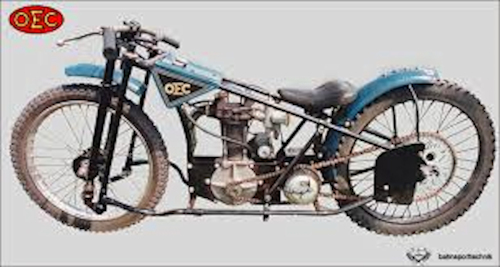
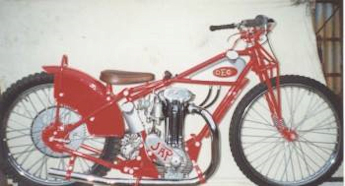 |
|
OEC Owned by Noel Clark |
| |
|
|
|
|
|
| ONC Bike |
|
|
 |
|
Courtesy of Tony Webb |
|
|
|
Tony thinks this bike may have been used in the Netherlands but little
is known about it. The bike wouldn't get very far as the rear
chain is missing! John says: It is possibly a JAP long track machine.
I don't know anything about this bike so do you recognise it? |
|
| |
|
|
Pre War JAWA
Long Tracker |
|
|
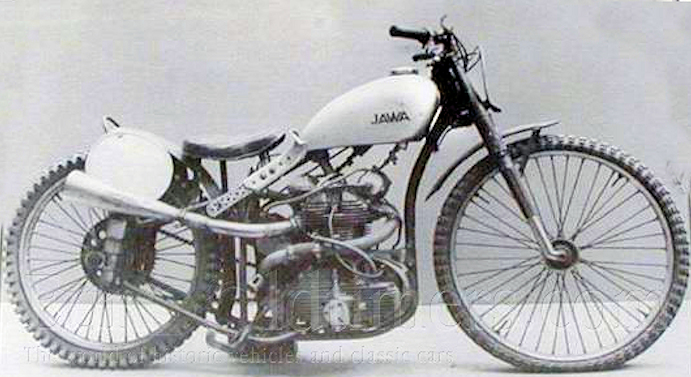 |
|
Courtesy of Tony Webb |
|
|
|
Pre war Jawa longtracker. The machine has a very big oil
sump/crankcase
|
|
|
|
|
|
|
|
| Skilton Rudge/JAP
1936 |
|
|
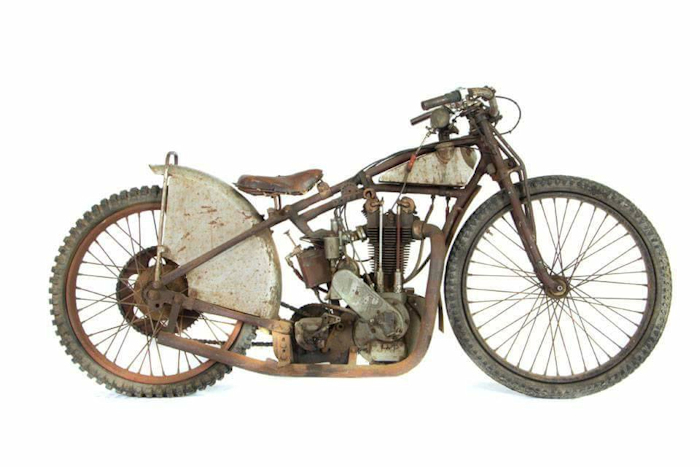 |
|
Courtesy of Tony Webb |
|
|
|
Skilton Rudge 1936. Note plunger on oil pump and down draught on carb.
Vintage collectors do not see a rusty old bike they would say it's "patina"
is attractive and I agree sometimes but love to see old bike
restorations too!
|
|
|
|
|
|
| |
|
Comerford JAP |
| |
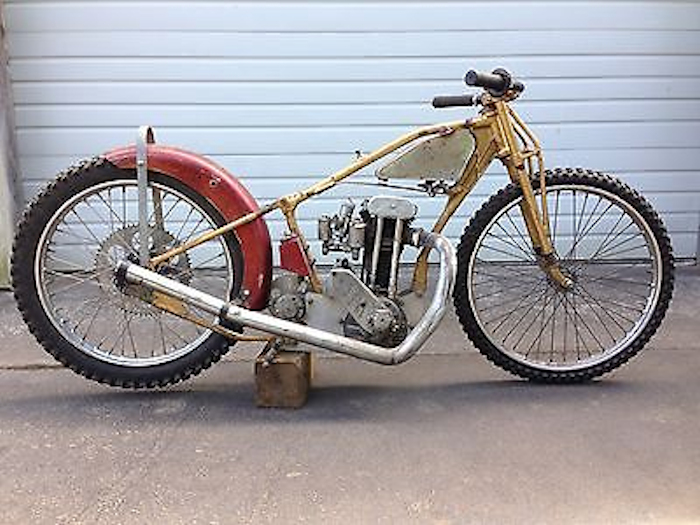 |
| |
|
Comerford JAP Unusual engine position. Looks like original diamond with
headstock plates indentations. not sure about the bottom chain stays
|
| |
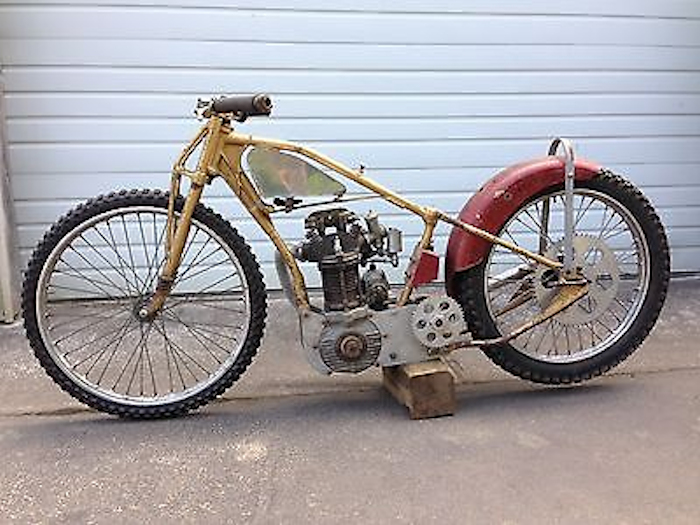 |
| Courtesy of Tony Webb |
|
|
|
|
|
| |
|
JAP v HRD |
| |
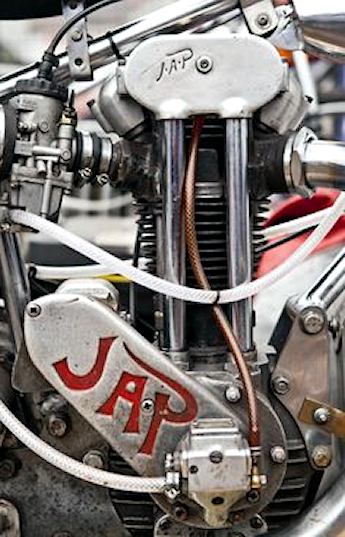
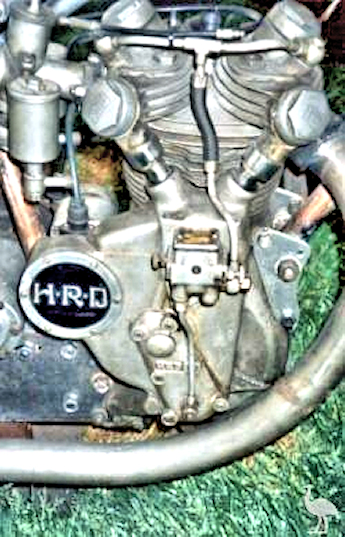 |
| Courtesy of Reg Fearman |
|
|
|
Reg Fearman says: The J.A. Prestwich speedway engine is easily
recognisable and reigned supreme for some 60 years. Does anyone
recognise the H.R.D. ? It was produced in a small number around
1947 - 1948 for speedway racing. Malcolm Craven raced quite
successfully for the whole season with the engine. The West Ham
Mechanic Alex Moseley was quite involved with the H.R.D. and built
the frame that it 'rested' in. Unfortunately the new price of the
engine compared to the J.A.P. proved prohibitive so the venture was
abandoned at the end of the season. Much later the 'Matchless'
engine was tested and tried in practice.
|
|
|
| John says: JAP are the initials of the
inventor of the engine. He was called John Alfred Prestwich. The
HRD initials stands for the founder's name Howard Raymond Davies. HRD
Motorcycles were produced from 1924 to 1928, but the undercapitalised
company, although having a reputation for performance, struggled to
survive, and was ultimately sold to OK-Supreme, who then sold the name
and goodwill to Phil Vincent, a motorcycle designer. His name was then
incorporated into a new company, The Vincent HRD Company Ltd. A
500cc speedway machine was developed under the name Vincent Vampire but
it didn't last long. JAP had seen off all-comers until the Czech
ESO came along in the 1960s. |
|
|
|
|
|
| |
|
Briggo's Handlebars! |
| |
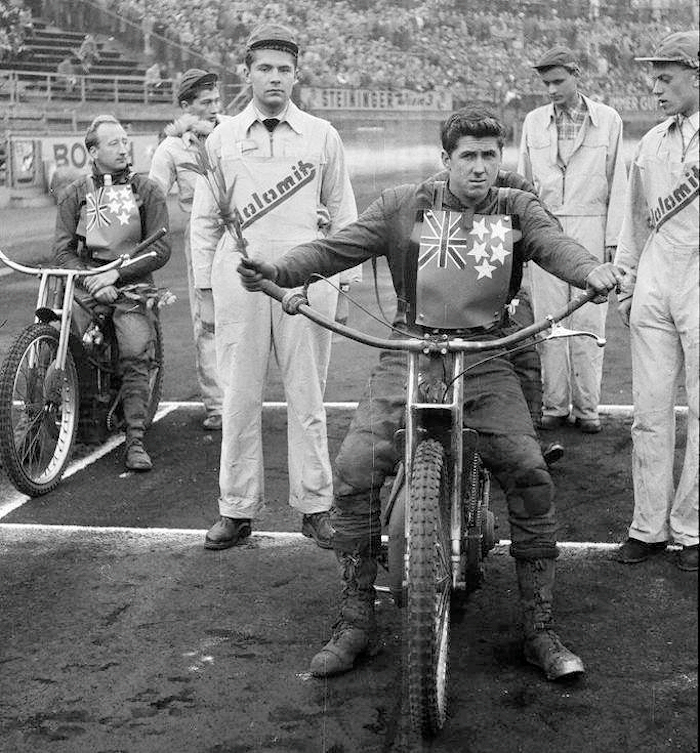 |
|
Courtesy of Tony Webb |
|
|
|
Tony Webb says:
Briggo
with some extra wide handlebars, note the position of the clutch lever
and the trend that briggo started by turning the throttle cable
skywards. Jack Geran in the background on what looks like a early Huck
Fynn. Photo source unknown
|
|
|
| John says: In a chat with Ivan Mauger I asked
him about these wide handlebars from years gone by. He said when
tracks were deep, to turn a JAP you needed extra leverage. John
says: Barry's clutch lever may have been personal preference but I
remember Mike Broadbanks gripping his bars in a similar position well
away from the ends. These wide bars must have meant extra strain
on the clamps at the fork yoke. I had a Royal Enfield road machine
to which I fitted "ape-hanger bars" and the leverage meant the bars were
always moving about, so I went back to straight handlebars for safety's
sake and discarded the "Easy Rider" bars to the scrap heap |
|
|
|
|
|
|
|
|
1929
BlackburneWallis |
|
|
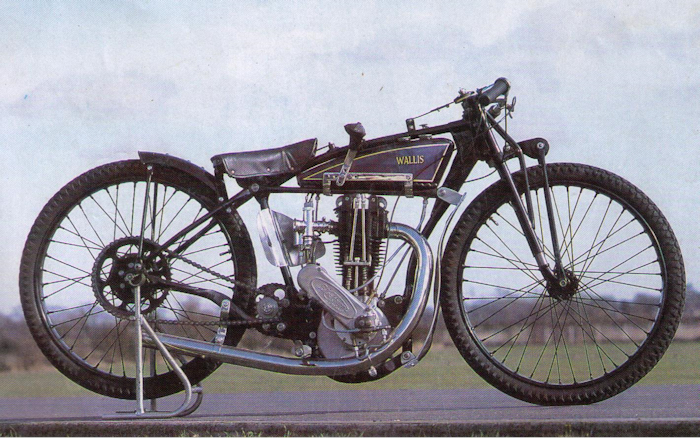 |
| Courtesy of Tony Webb |
| |
| This bike is a little different from the norm!
The rear chain looks lonely! I suspect the primary chain will be
on the other side, quite unusual Mr Wallis! |
|
|
|
|
|
|
|
| Early Riders |
|
|
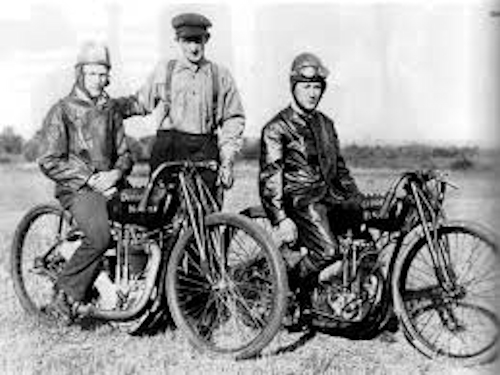 |
|
Courtesy of Tony Webb |
|
|
|
Tony Webb says:
Charlie Ogden was one of the most respected engine tuners in Australia.
The riders either side of Charlie are John
Patman and Bobby Blake , the photo is believed to have been taken at
Moore Park in Sydney.
|
| John says: These riders are on identical machines possibly
OEC engines but their handlebars suggest they are mounted on Harley
Davidsons. I think OEC engines, but if you can help send me an
email
John |
| |
|
|
|
|
|
|
The Comerford
Special
|
|
|
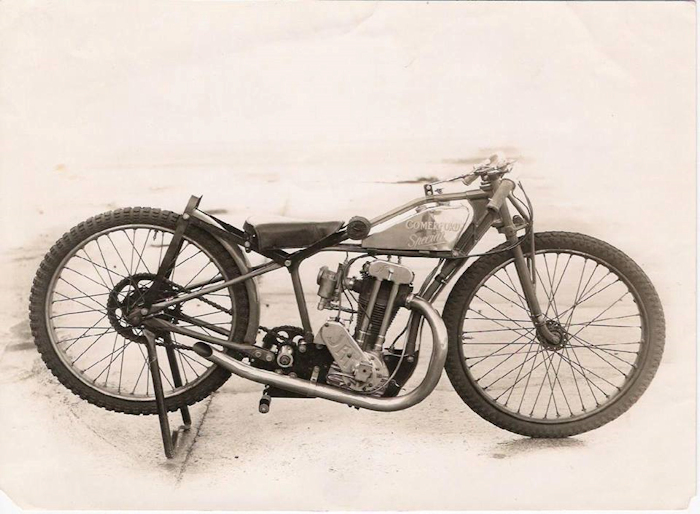 |
| Courtesy of Dave Gifford and Tony Webb |
|
|
|
"The
Comerford Wallis with direct drive 1932
Photo Giffy".
John says: a JAP" with "Skinny" tyres. I
don't understand the term "Direct Drive" I think all speedway bikes are
direct drive via a chain from the engine sprocket to the rear wheel
sprocket via the clutch. They don't have gearboxes! I will email giffy in NZ for
his advice as maybe I am missing something here?
|
|
|
|
Giffy says:
Hi John
old mate, I think this is a pic I sent to Tony, I have a Wallis frame
that he wants to buy and the Comerford was developed from the Wallis.
Anyhow, what he said is not quite correct, a true direct drive is when
a single chain or belt runs from the engine to the back wheel. The early
board track racers were like this. The Comerford and several other early
speedway bikes used a countershaft system like the one in the picture
which enabled gear ratios to be more easily obtained. The down side of
this system was that the bikes were hard to move around, when the back
wheel turned so did the motor and a decompresser which lifted the
exhaust valve off it’s seat was fitted to early JAPs I think it was
around 1933 when clutches fitted to the countershaft became the norm and
gate starting became possible. The correct way to describe modern
transmissions might be Single Geared with a clutch. Hey man, the
maggies are back next season!!!!!!!!!!!!!!!!!!!!!!!!! All the best,
giffy |
|
|
|
John says: Hi giffy, Thank you for the tech info. As a Magpies fan you must be happy that
the "Toon" have been promoted to the Premiership 2017 as I am too, "Howay
the lads" let us pray the team can attract top players with a 100
million player fund pot. Problem is other teams are paying nearly
that for just a couple of players. |
|
|
|
| |
| |
|
The Fastest Quarter Miler, A Wallis JAP |
|
|
 |
| Courtesy of Tony Webb |
| |
| The JAP engine's brute force torque, developed
by the long-stroke engine and it's high compression ratio propelled
this bike to break the quarter mile speed/time record and the Wallis JAP bikes were
excellent speedway machines too |
| |
|
| |
|
|
| 3 Bike Pics From Giffy |
| |
| Rotrax JAP 1966 |
| |
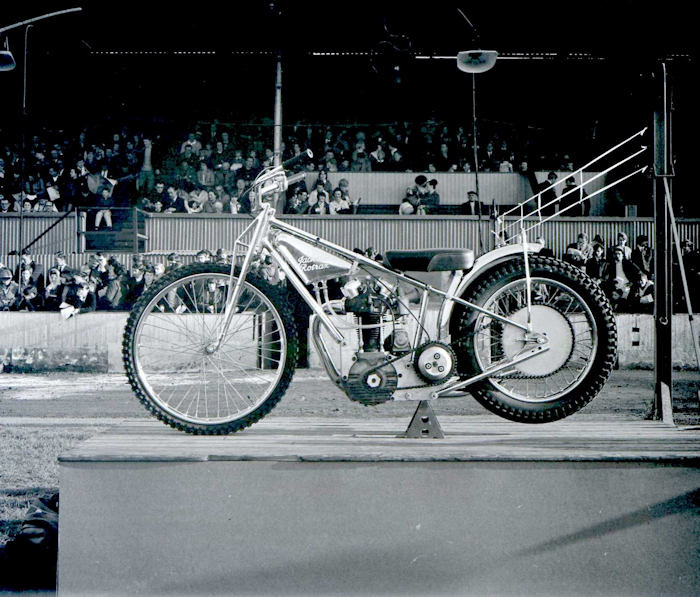 |
| |
| John says:
Thanks giffy The most beautiful speedway bike ever made in my opinion.
The mighty JAP engine housed in the Rotrax frame.
The
Rotrax was first prize at the Scottish Championship 1966 at Old
Meadowbank 28th May 1966. The
bike was brand new hence the solid rear sprocket. Riders drilled
out the socket to lighten the weight slightly. I wish I had one to
start up on sunday mornings to annoy my neighbours! |
|
|
| |
| Early 1960s ESO |
| |
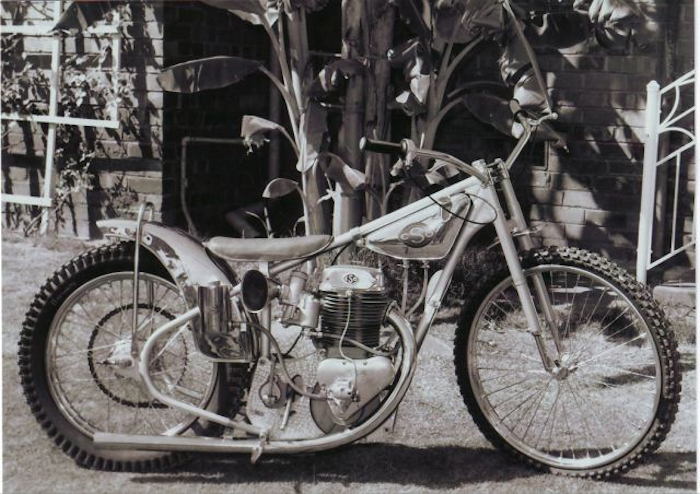 |
| |
|
Another
great looking machine. This Eso was the first to be imported into
Australia sometime around 1960. The ESO had a shorter stroke
engine and needed far less work than the JAP. It was also easier
to ride, so move over JAP, the Czech machine later to be called the JAWA
was about to claim first place in world speedway and
Justifiably
so.
Much as I liked the JAPs they just couldn't compete with the ESO/JAWA
which were cheaper, more reliable and easier to ride.
|
| |
| |
| Another 1960's ESO |
| |
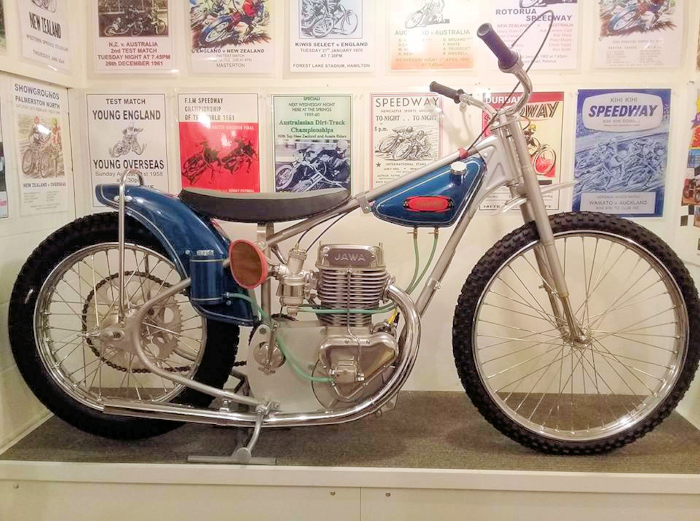 |
| |
Dave Gifford says: Hi John, hope all is well. I have attached a
pic of a 1967 Jawa I tidied up a few years ago but never got
around to taking a photo of it, til now. All the
best, giffy
|
| |
| |
| Giffy's Cave |
| |
Hi John, hope you are safe and well during what must be a very
difficult time in the UK. I have att some pics taken in my
"cave",most of the bikes are finished, a couple of air cleaners to
come back from the chrome platers and that's it. No more to do for
myself but a bit of stuff for other people will keep me busy. I will
hold on to bikes for about a year and then I intend to sell them, I
don't want to fall off the perch and leave it all for someone else
to sort out!
I take it there was no speedway at all at Brough last year? Must
have hit the riders and promoters really hard, a great shame to
be sure. Anyway mate the pics are there if you want to use them
in the Bike pages and I hope things improve quickly for you and
all my old friends over there.
All the best, giffy
PS photos aren't the best quality, I got her indoors to take
them with her mobility telephone and she was shaking a bit with
the excitement of being allowed in the "cave."
|
| |
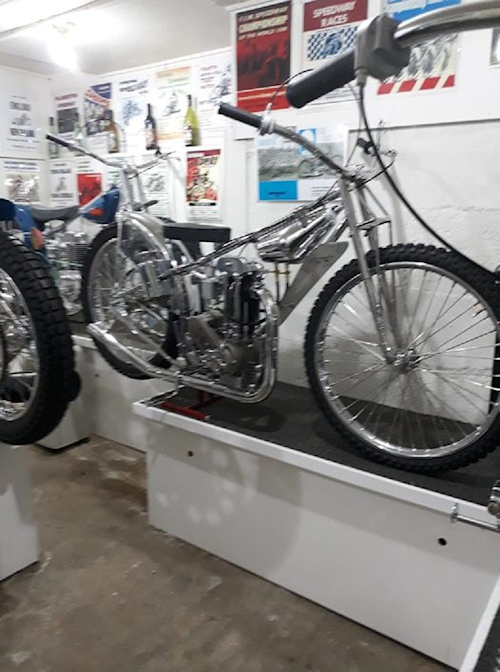 |
| Giffy's Cave 1: Courtesy of Dave Gifford |
| |
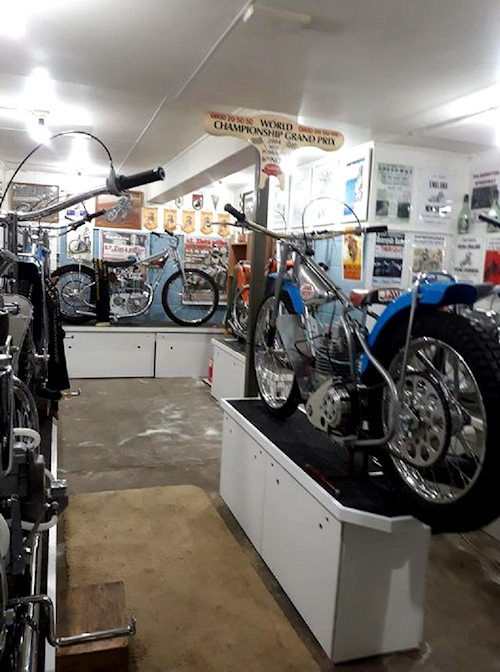 |
| Giffy's Cave 2: Courtesy of Dave Gifford |
| |
 |
| Giffy's Cave 3: Courtesy of Dave Gifford |
| |
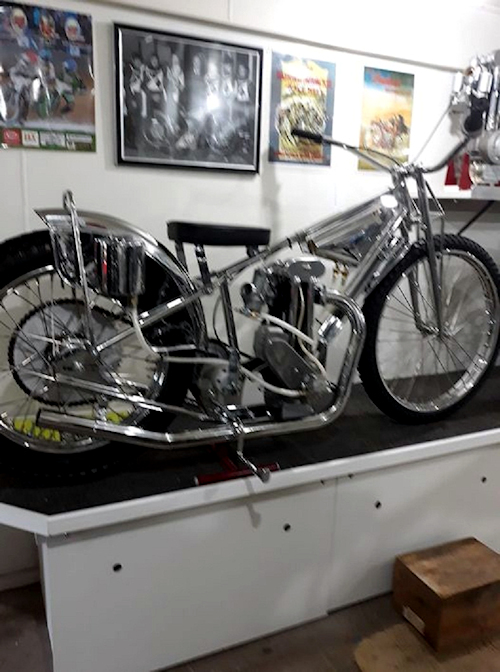 |
| Giffy's Cave 4: Courtesy of Dave Gifford |
| |
| Dave's glittering chromed collection of
speedway machines he has on show, on plinths, around his man cave is a
breathtaking sight for all bike fans. It sounds like he isn't about
to take on any more restorations for himself and is limiting himself to
doing jobs for others. Correct me if I am wrong giffy. My
last word is, "Is
there any finer sight than a fully chromed Rotrax JAP?" |
| |
|
|
|
|
|
| |
|
Gerhard Engine Co |
| |
| The New Kid On The Block! |
| |
| Marcel Gerhard (I believe he is Swiss?)
is a former speedway rider who competed in Speedway, Longtrack and
Grasstrack Racing. He reached 12 Longtrack world championship finals and
took the top honors in 1992. Marcel started retailing his brand
new GTR engines at £3,950.00 +VAT for the 2017 season. Jawa and GM
now have another serious rival. Someone needs to do a "Top Gear"
type comparison between the 3 machines! Newcastle rider Ludvig
Lindgren and his GP rider-brother Freddie Lindgren have the engines. |
| |
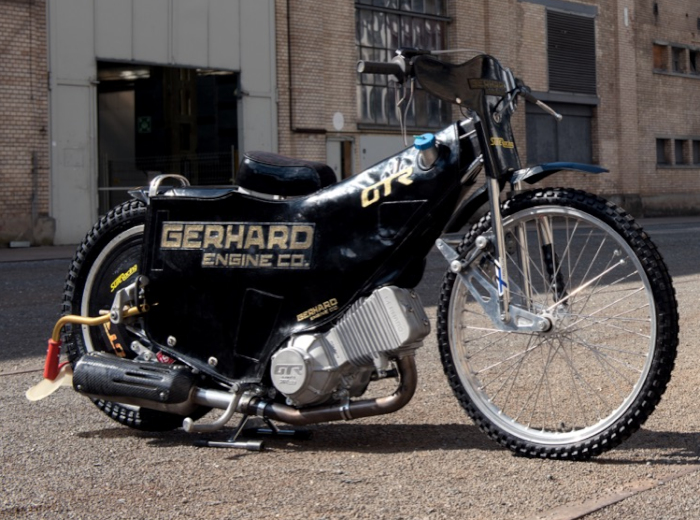 |
| Courtesy of J Spoor |
| |
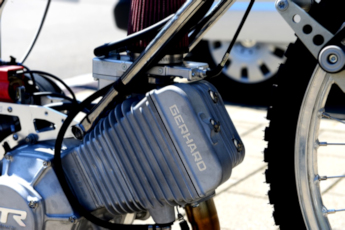
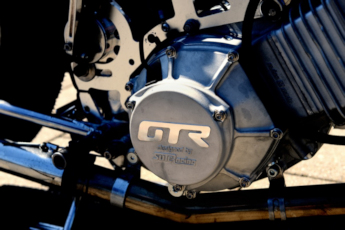 |
| Courtesy of J Spoor |
| |
| The Gerhard Engine Co. is a collaboration
between speedway tuner Marcel Gerhard and Suter Racing Technology. The
innovative GTR Project is a complete new speedway engine concept to
bring speedway into the 21th century. More than 30 years of speedway
experience of Marcel Gerhard meets the latest technology by Suter
Racing. The concept is simple: position the GTR engine as a high quality
product on the market, make it “the engine to beat” in the future. |
|
|
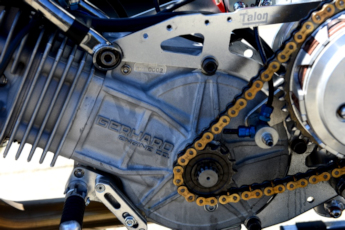
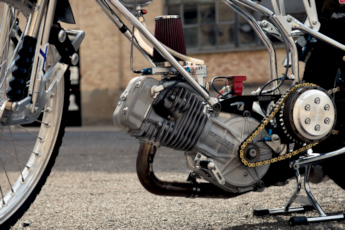 |
| Courtesy of J Spoor |
| |
| The business side of a speedway engine.
The powerful 500cc single cylinder engine turns the small engine
sprocket and the primary chain transfers the energy to the Clutch
sprocket which in turn drives the rear chain which ultimately turns the
back wheel, this all happens in the blink of an eye. |
|
|
| I am really impressed by the Gerhard machine
although I can only look at pictures of it, but never-the-less the
pictures radiate quality. Time will tell if the Suter Racing GTR
can stay the pace set by GM and JAWA. I hope it does. |
| |

Courtesy of BSPA |
|
|
|
|
|
| |
| Name The Bike |
| |
 |
| |
| I received the above image from
Anibal one of my websites Argentinian visitors. He has
this photograph of a stripped down bike which he thinks
could be a 1926 AJS and the photo may have been taken
around 1930. I do not recognise the large flywheel
and do not think the bike is a 1920s AJS. Can anyone identify the machine?
John
I dread to think of the injuries the rider would get from
slipping back off the saddle onto the rear wheel at speed! |
| Robbie Huddleston says: It's a
1929/30 350cc FN side valve (used to have a couple of
them). Rob. |
| John says: I googled FN and
discovered they were made in Belgium. Here is a picture of
what I think the bike looked like before it was stripped
down by the Argentinian guy in the above picture. It
looks like the bike had a small capacity 2 stroke engine? |
| |
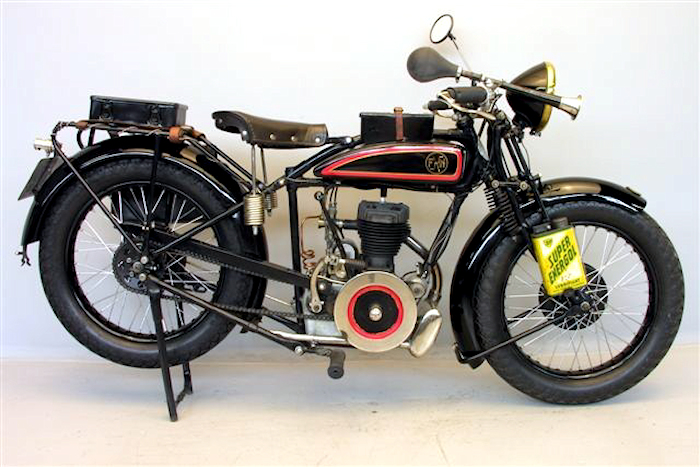 |
|
|
| John says: I love old bikes but
don't know anything about the Belgian FN. The bottom
pic seems to be the same or similar to the stripped down
machine at the top of this section. The engine looks
puny! less than 500cc and is a two stroke.
But in far flung areas of the world there must be people
with limited resources racing any machine they can get
their hands on. |
| |
|
| |
| |
| AJS |
| |
 |
| |
|
| |
| |
| 1948 Elstar
JAP |
| |
| Grasstrack Bike |
| |
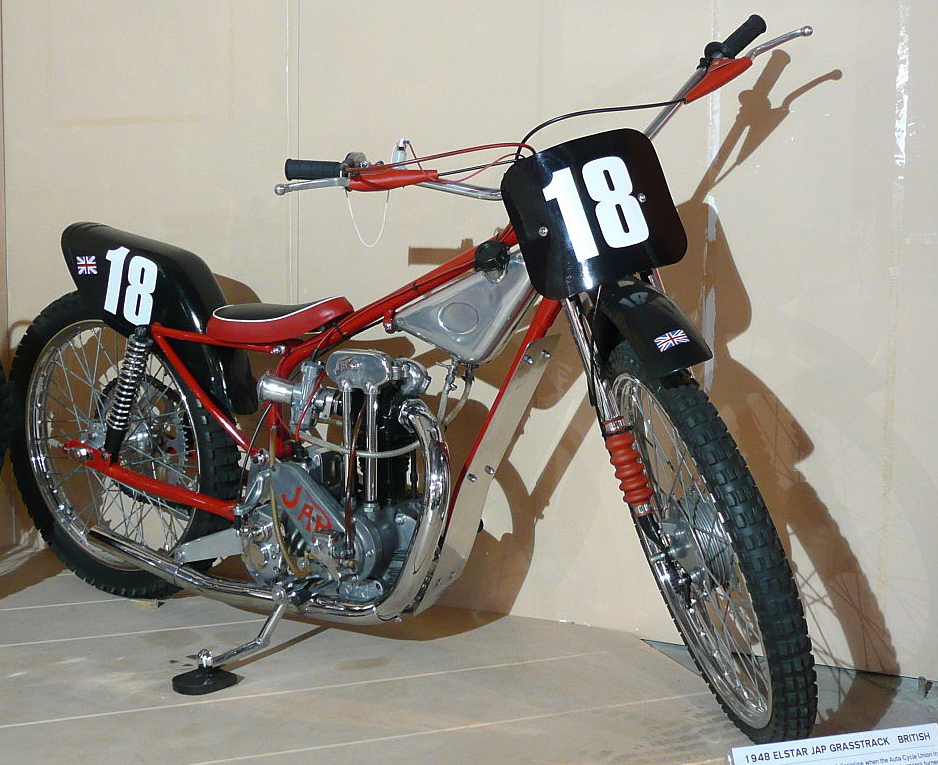 |
| Courtesy of John Spoor |
| |
|
| |
| |
| Reg Fearman's Speedway
Bike Machine Pictures |
| |
| John says: Reg and I exchange words
frequently by email and he has helped me often with my websites.
Reg never calls speedway bikes, bikes! He always refers to them as
Speedway Machines. He has sent me a number of pics of machines which
I am happy to show below: - |
| |
| |
| 1928 Douglas |
| |
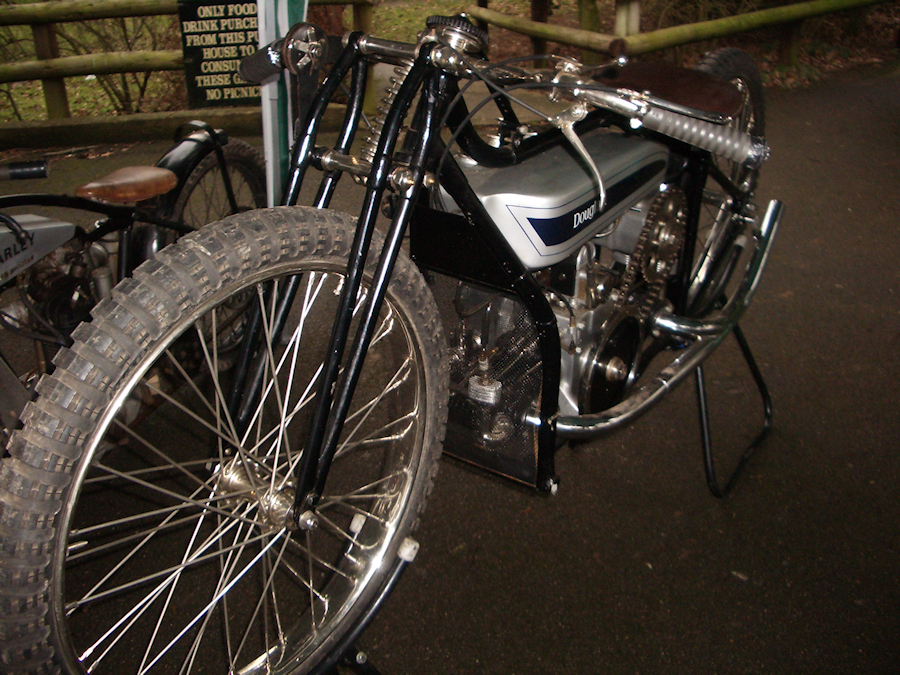 |
| |
| |
| Fay Taylour on a Douglas |
| |
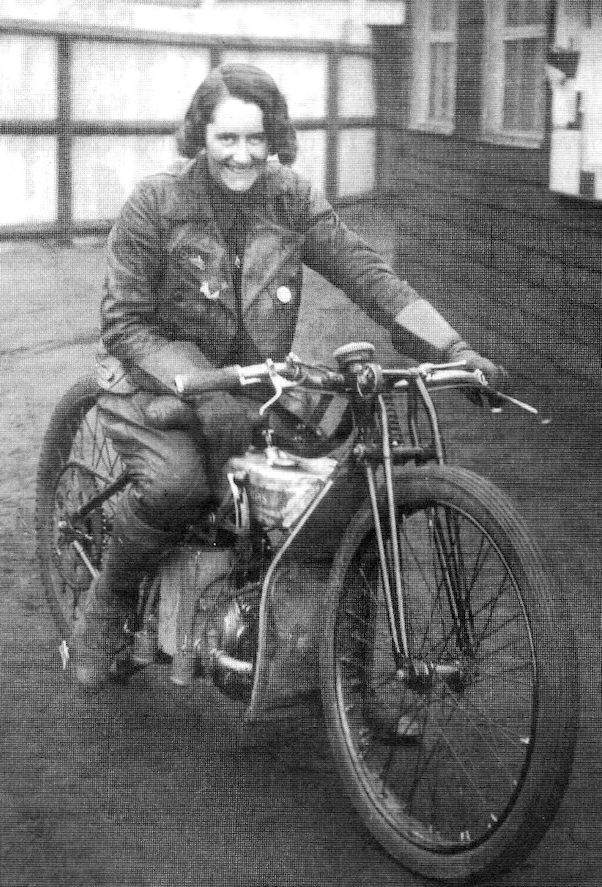 |
| |
| |
| JAP Engines |
| |

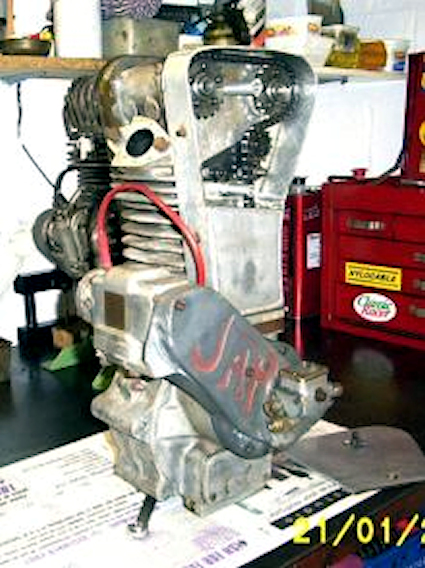
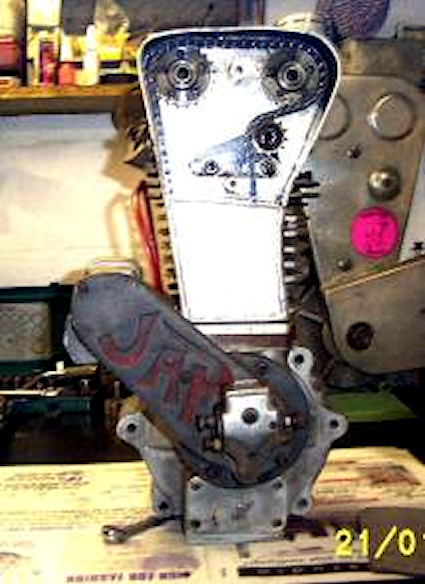
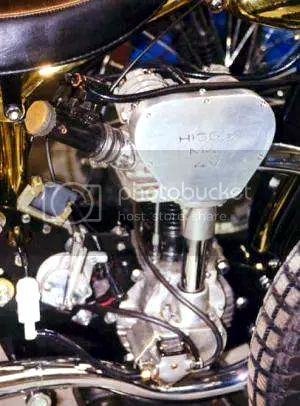 |
| |
| A conventional JAP engine and 3 pics of some
form of JAP conversions. I presume they were 4 valve
conversions |
| |
| |
| HRD (Vincent) Engine |
| |
 |
| |
 |
| |
| 1948 saw a new engine from a great name
in British motorcycling, Vincent. The engine/bike did not pose any
threat to the supremacy of the JAP and they soon dropped out of the
picture. |
| |
|
| |
| |
| Reg Luckhurst Engine & Bike |
| |
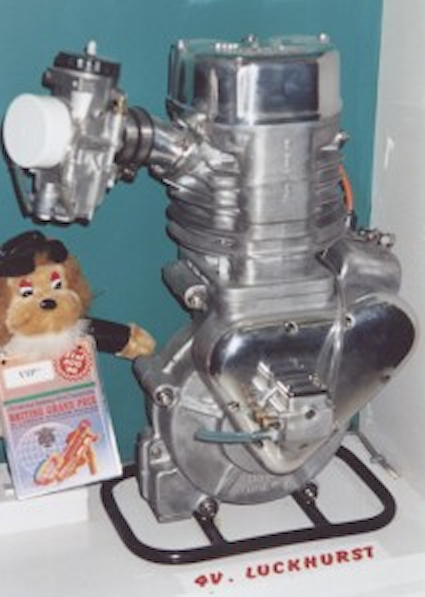
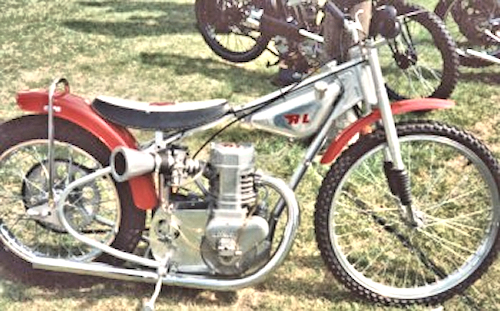 |
| |
|
| |
| |
| ESO |
| |
 |
| |
|
| |
| |
| JAWA |
| |
 |
| |
| A sadly neglected old Jawa |
| |
|
| |
| |
|
Birmingham Small Arms (BSA) |
| |
|
Aussie Ben Powers says: Hey mate, came across your ad online
somewhere saying you want photos of BSA early track stuff. Here’s
some photos of early dirt track stuff from Sydney.
|
| |
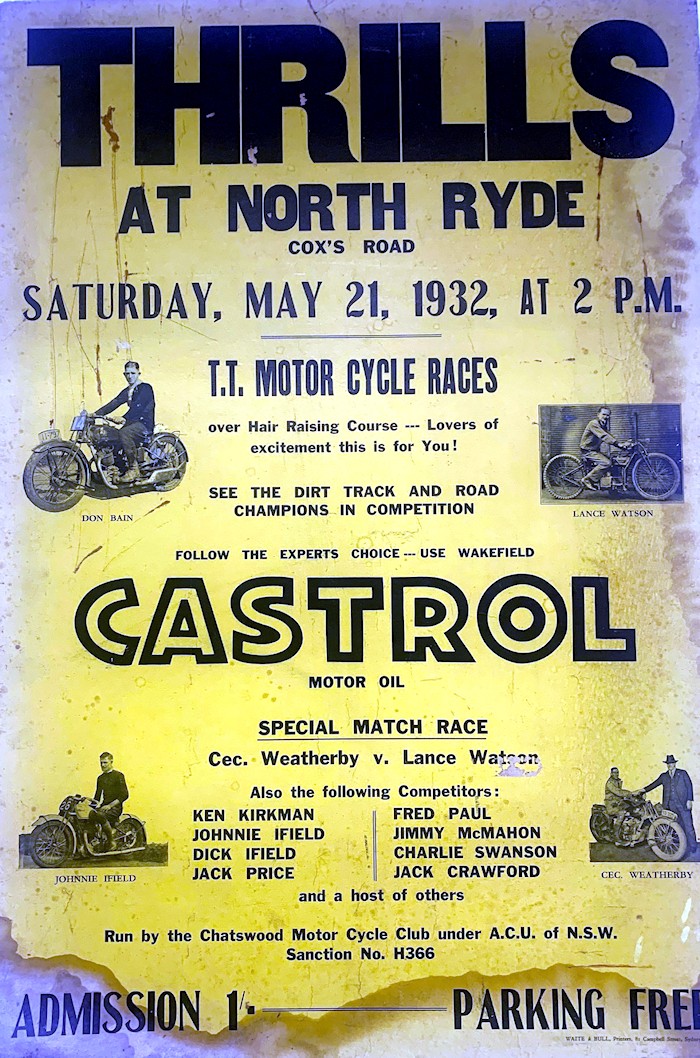 |
| Courtesy of Ben Powers |
|
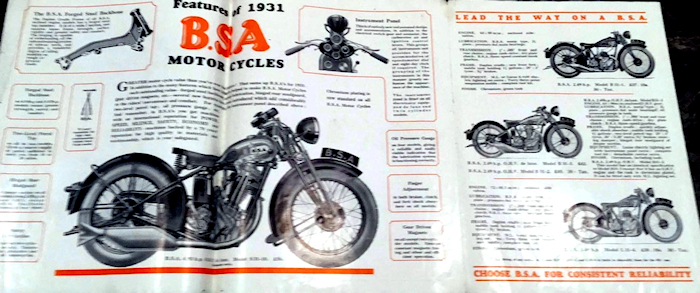 |
| Courtesy of Ben Powers |
| |
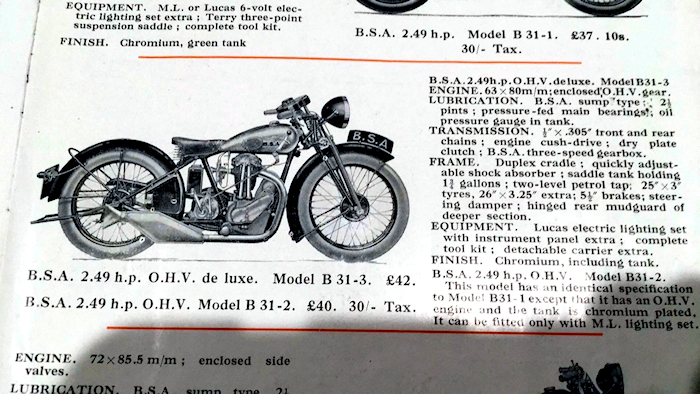 |
| Courtesy of Ben Powers |
| |
| BSA Engine |
| |
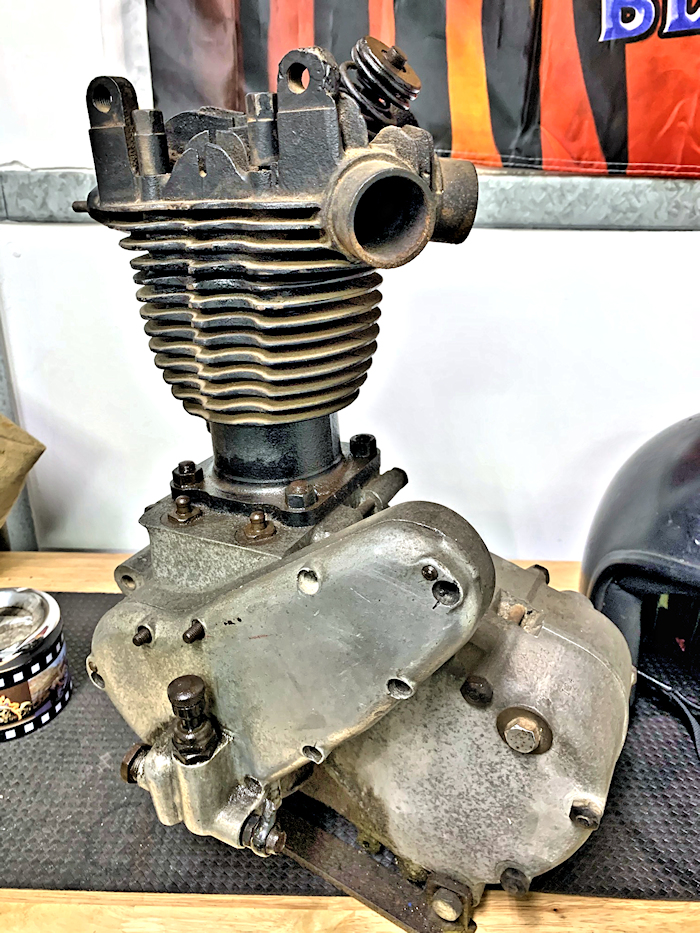 |
| Courtesy of Ben Powers |
| |
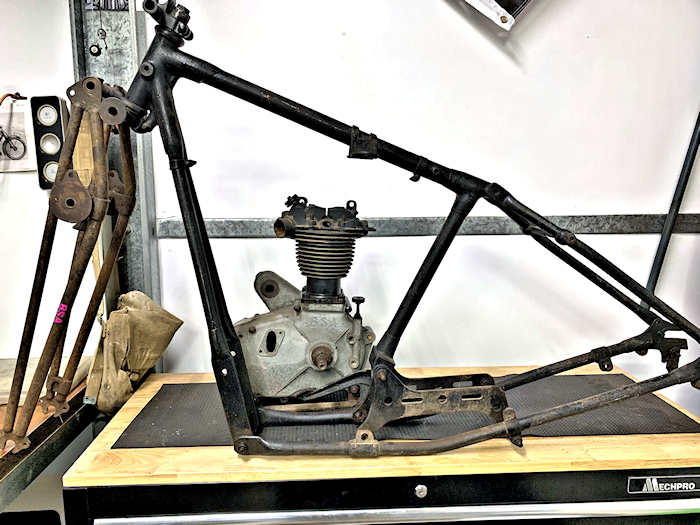 |
| Courtesy of Ben Powers |
| |
|
| |
|
Bikes Page 1 Bikes Page 2 Bikes Page 4
Bikes
Page 5 Bikes Page 6
Bikes Page 7
|
| |
|
|
The contents of this website are © and should not be produced
elsewhere for financial gain. The contributors to this website
gave the pictures and information on that understanding. If anyone
has any issue or objections to any items on my website please email me
and I will amend or remove the item. Where possible credit has
been given to the owner of each item. |




































































